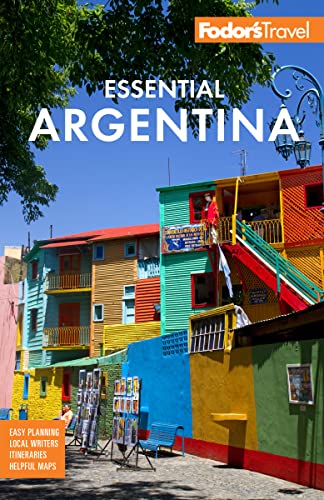Cerro Aconcagua via the Uspallata Pass
At 6,957 meters (22,825 feet), Cerro Aconcagua is the highest mountain in both the Western and the Southern hemispheres. The so-called Giant of America towers over the Andes with its five glaciers gleaming in the sun; and every year, late November through March, thousands try to conquer it.
However, you don't have to be a mountaineer to enjoy the wild beauty here. Although guided climbing expeditions require two weeks of hiking and acclimating, a worthy alternative is to park at the rangers' cabin right off Ruta Nacional 7 just beyond the Puente del Inca, pay the park fee, and hike three hours from the Río Horcones to a lagoon. If this seems like a short hike for such a drive out, relax knowing that the journey to this place is as breathtaking as Aconcagua itself.
While fauna isn't thick, sight lines are unobstructed, and you might see foxes or shy guanacos; look up for condors, too. Alpine meadows bloom in the spring, and lichen are up to 500 years old.
Drive Safely
Ruta Nacional 7 is the only road that connects the Pacific ports of Chile with Argentina, Brazil, and Uruguay. Be prepared for heavy truck traffic.
In winter, icy roads can close for days; mudslides can cause closures in all seasons. The altitude jumps from 762 meters (2,500 feet) in Mendoza to 3,184 meters (10,446 feet) at the top of the pass; winds can sometimes be brutal.
Along the Uspallata Pass (RN7, the Panamerican Highway)
Leaving Mendoza, green vineyards give way to barren hills and scrub brush as you follow the river for 30 km (19 miles). If you find yourself engulfed in fog and drizzle, don't despair: you'll likely encounter brilliant sunshine when you reach the Potrerillos Valley 39 km (24 miles) away. The road passes a long dam and then follows the Río Mendoza for 105 km (65 miles) to Uspallata, the last town before the Chilean frontier.
Along the way, the ríos Blanco and Tambillos rush down from the mountains into the Río Mendoza, and remnants of Inca tambos (resting places) marked by signs en route remind you that this was once an Inca trail; if you're traveling with a guide, she or he will stop for you to check them out. At Punta de Vacas, corrals that held cattle on their way to Chile lie abandoned alongside defunct railway tracks. Two km (1 mile) beyond the army barracks and customs office three valleys converge. Looking south, the region's third-highest mountain—Cerro Tupungato, an inactive volcano (6,800 meters/22,310 feet)—reigns above the Valle de Uco.
After passing the ski area at Los Penitentes, you arrive at Puente del Inca (2,950 meters/9,680 feet). Legend has it that long before the Spaniards arrived, an Inca chief traveled here to cure his paralysis in the thermal waters. Today, in addition to the thermal springs, you'll see a natural bridge of red rocks encrusted with yellow sulfur that spans the Río Cuevas; what's left of a spa hotel, built in the 1920s and destroyed in a 1965 flood, is covered in copper and gold sediment below the bridge. A few miles farther west, past the Argentine customs check, are the entrance to the park and the ranger’s cabin. Fifteen km (9 miles) farther along, the highway passes Las Cuevas, a settlement where the road forks right to Chile or left to the statue of Cristo Redentor (Christ the Redeemer), commemorating the 1902 peace pact between the two countries.
Hiking Guides and Logistics
November through March, you can sign on for two- or three-day guided treks to the Plaza de Mulas base camp at 4,260 meters (13,976 feet), where there's a refugio (cabin with bunk beds).
Guides will often take care of the necessary paperwork ; otherwise, you can purchase a permit at the Parque San Martín Visitor's Center in Mendoza City (Las Tipas at Los Robles Weekdays 8–6, weekends 9–1). Trekking permits cost US$110–$280, depending on the season, level, and number of days; ascent permits cost US$500–$800. Day permits, available at the entrance to Aconcagua Park, cost about US$2.
Into Chile
Some tour groups and independent travelers continue on through to Chile to explore the vintages there. Visas, required of U.S. citizens, can be obtained at the border.




